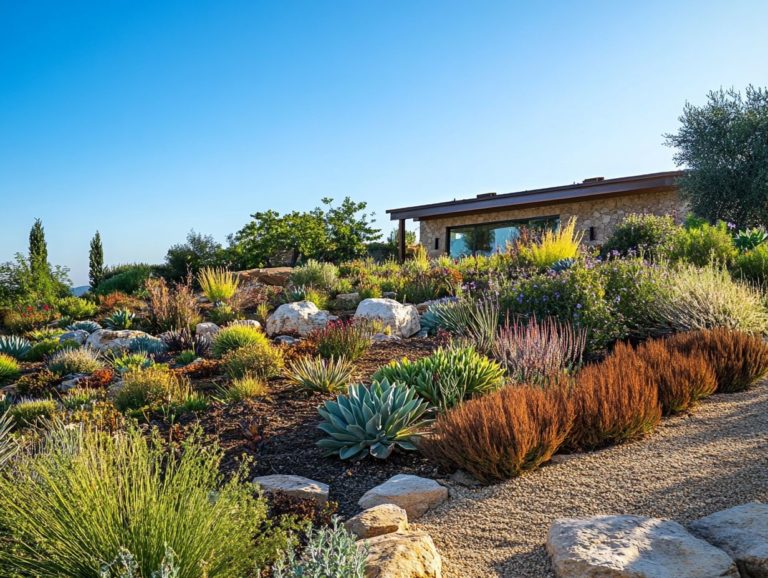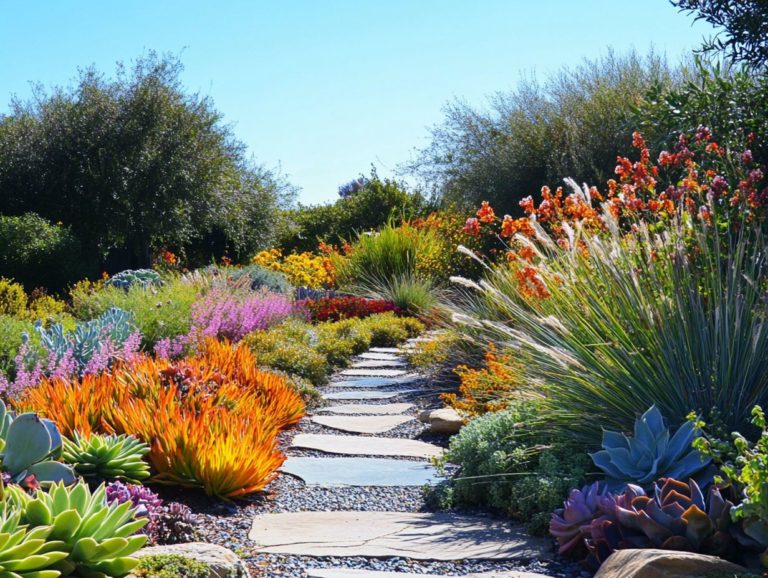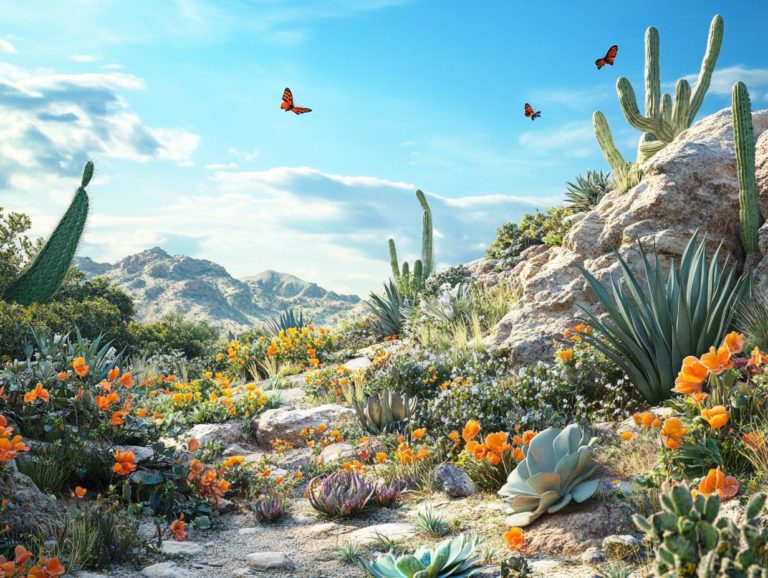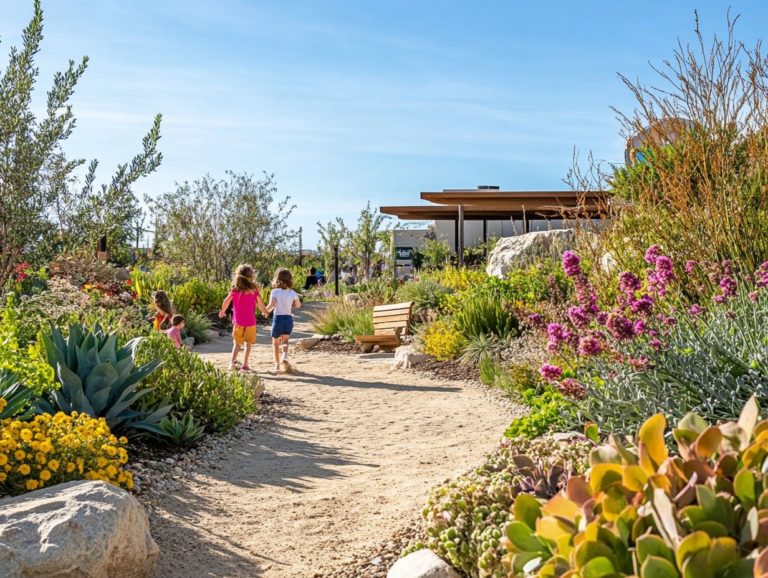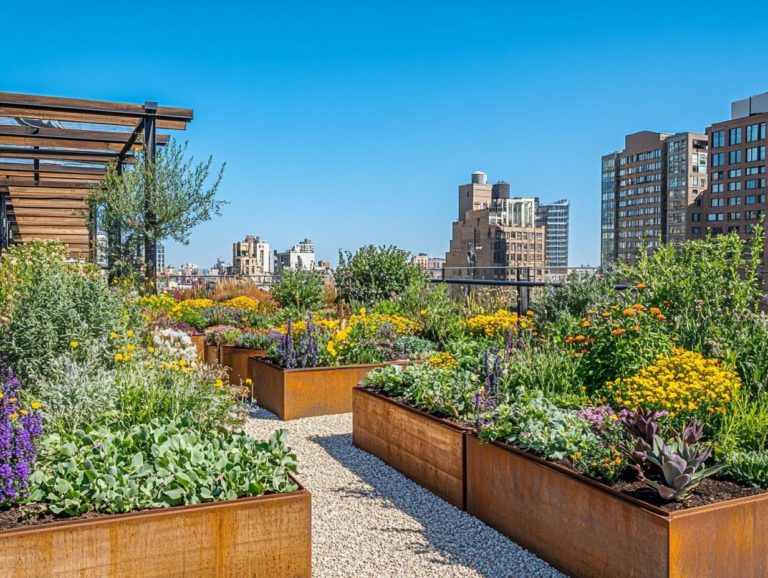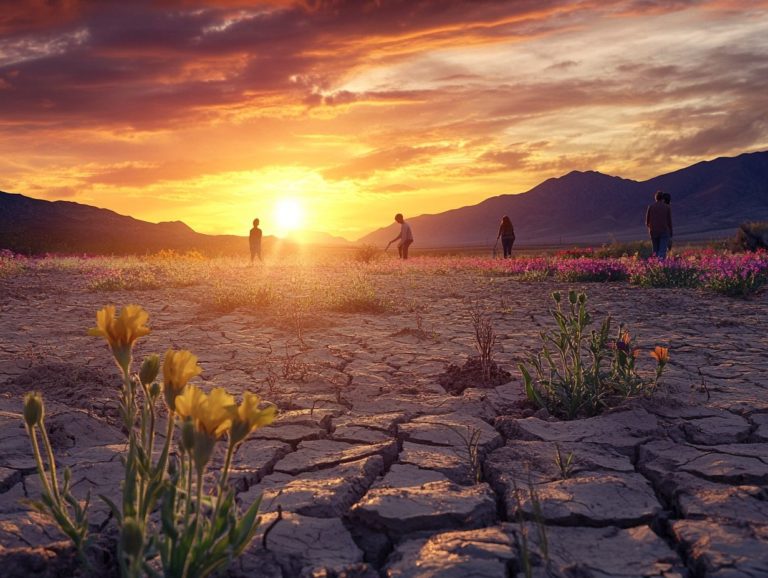Drought-Resistant Landscaping Trends for 2024
In a time when water conservation is more crucial than ever, drought-resistant landscaping presents a practical and sustainable solution for you as a homeowner.
This article delves into the concept of drought-resistant landscaping and unveils its many benefits, from positive environmental impacts to significant cost savings. You ll find a simple guide to implementing and maintaining this eco-friendly approach in your yard. Discover the secrets to crafting a stunning landscape that flourishes even in arid conditions!
Contents
- Key Takeaways:
- Benefits of Drought-Resistant Landscaping
- Current Trends in Drought-Resistant Landscaping
- Choosing the Right Plants for Drought-Resistant Landscaping
- Implementing Drought-Resistant Landscaping in Your Yard
- Maintaining Drought-Resistant Landscaping
- Frequently Asked Questions
- What are the top drought-resistant landscaping trends for 2024?
- Why is drought-resistant landscaping becoming more popular?
- How can I incorporate hardscaping into my drought-resistant landscape?
- What are some popular native plants for drought-resistant landscaping in 2024?
- Are there any new technologies for smart irrigation systems?
- How can I learn more about drought-resistant landscaping trends for 2024?
Key Takeaways:
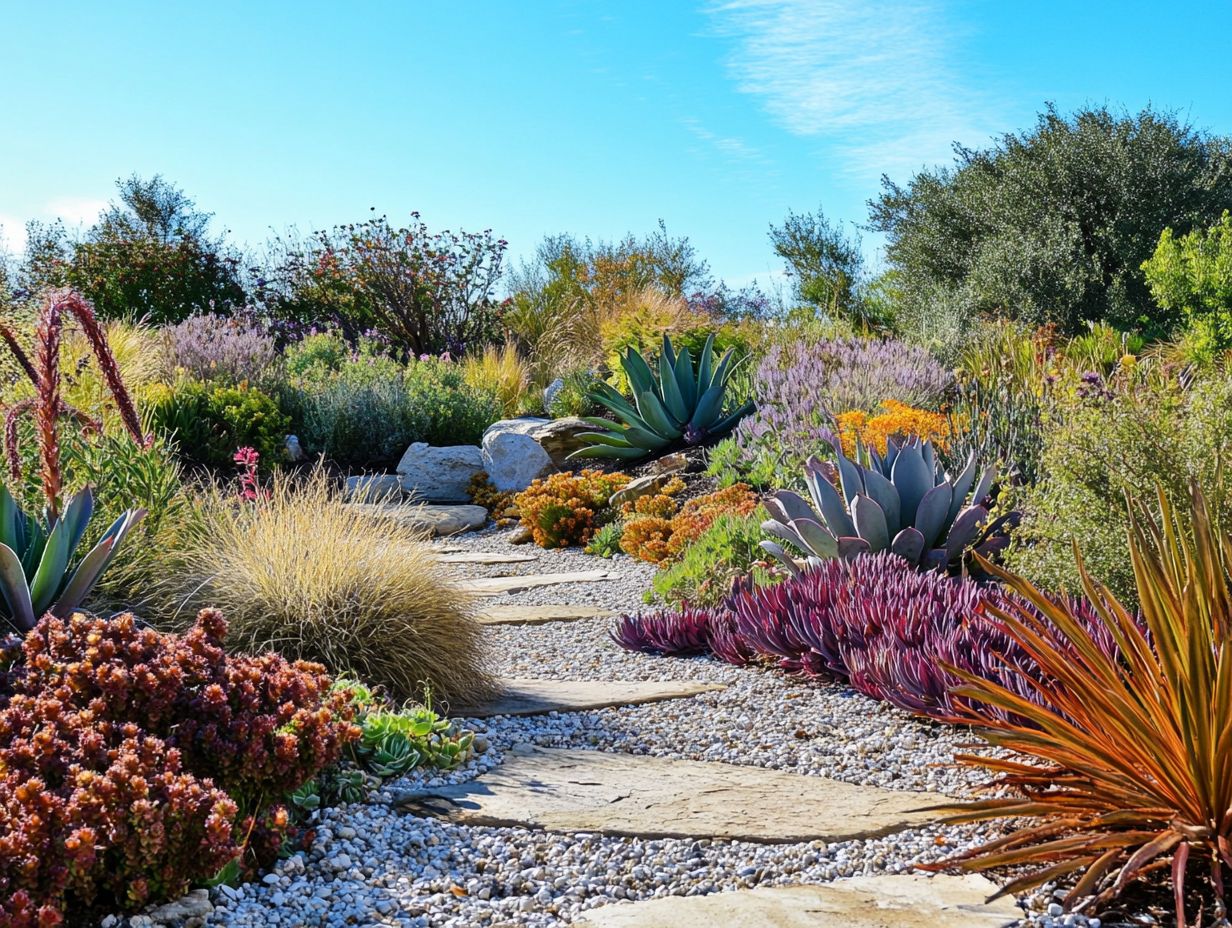
- Drought-resistant landscaping is an environmentally and financially advantageous approach to landscaping that conserves water.
- The latest trends in drought-resistant landscaping include innovative designs and techniques that require less water and maintenance.
- Choosing the right drought-tolerant plants and following proper care and maintenance tips are key components to successfully implementing drought-resistant landscaping.
What is Drought-Resistant Landscaping?
Drought-resistant landscaping, or xeriscaping, serves as a sustainable gardening approach tailored specifically for you. It emphasizes selecting plants and design techniques that thrive in dry conditions, making it perfect for enhancing your outdoor living spaces while adapting to climate changes.
Saving water is just one of the amazing benefits of this practice! It also encourages the use of native plants, which require minimal maintenance and contribute to soil health.
By incorporating principles such as soil improvement, thoughtful plant selection, and efficient irrigation, drought-resistant landscaping significantly reduces your reliance on chemical fertilizers and pesticides. This fosters a healthier ecosystem right in your backyard.
Unlike traditional landscaping, which often demands high water consumption and introduces non-native species, this environmentally conscious design prioritizes local flora that naturally adapts to your climate, thereby alleviating environmental stress.
These strategies not only help with water conservation, but also play a crucial role in combating climate change by enhancing biodiversity and mitigating urban heat. Ultimately, you have the opportunity to transform your yard into a vibrant space that offers aesthetic value while supporting sustainable practices and fostering resilience in the face of shifting weather patterns.
Benefits of Drought-Resistant Landscaping
Drought-resistant landscaping presents an array of benefits that extend far beyond aesthetics. By significantly reducing water usage and enhancing soil health, it not only nurtures the environment but also offers financial perks like lower maintenance costs and increased property value.
For eco-conscious homeowners, this strategy is a wise investment. It actively supports local ecosystems while contributing to sustainable practices in urban gardening, making your outdoor space not just beautiful, but also a responsible choice.
Environmental and Financial Advantages
The environmental benefits of drought-resistant landscaping are impressive, offering significant water conservation and supporting local wildlife habitats. By incorporating native plants that thrive in arid conditions, you re not just enhancing local biodiversity; you re also creating vital ecosystems for pollinators like bees and butterflies.
These hardy plants typically require minimal watering, which means you ll see noticeable savings on your utility bills, particularly in areas where water scarcity is a concern.
While the initial investment in eco-friendly designs might seem steep, it often pays off as properties appreciate in value, making them more appealing to environmentally conscious buyers. Plus, such landscapes can help mitigate the urban heat island effect, allowing communities to enjoy cooler temperatures during those sweltering summer months.
Don’t miss out on the chance to transform your yard and contribute to a greener planet!
Current Trends in Drought-Resistant Landscaping
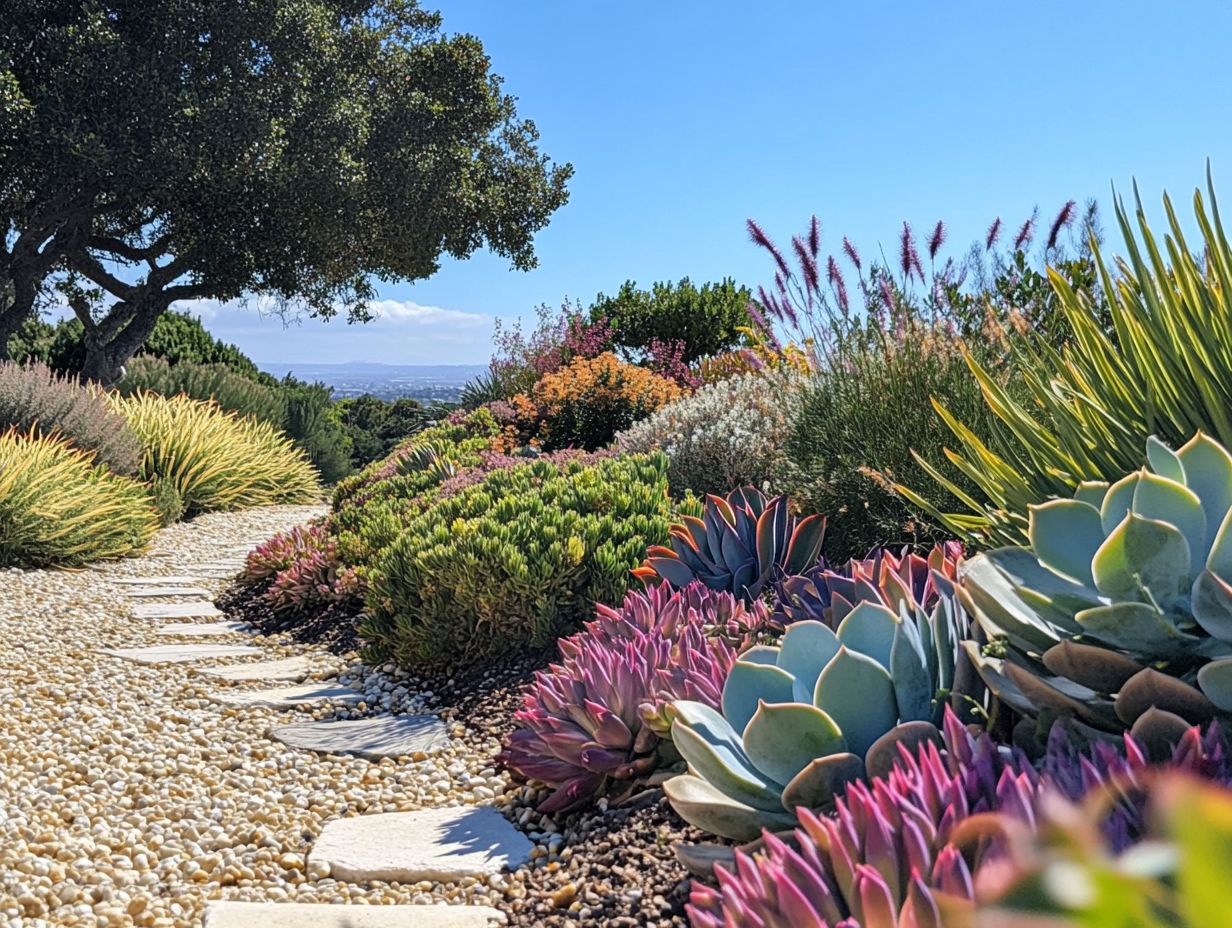
Current trends in drought-resistant landscaping showcase your growing awareness of climate adaptability and sustainability. This evolution leads to innovative designs that seamlessly blend outdoor aesthetics with functionality. To learn more about this, explore the future of drought-resistant gardening, allowing you to create stunning, low-maintenance spaces.
Embracing these trends means integrating native plants and incorporating hardscaping elements. Additionally, understanding the role of drought-resistant plants in landscaping minimizes water usage while enhancing visual appeal.
Innovative Designs and Techniques
Innovative designs and techniques in drought-resistant landscaping focus on crafting visually stunning outdoor spaces. These designs embrace climate adaptability to significantly reduce water consumption. You’ll find unique structures and carefully selected plants that flourish in dry conditions, enhancing the beauty of your environment while keeping up with emerging trends in drought-resistant plants.
These creative strategies prioritize sustainability and elevate the overall aesthetic of your garden, transforming it into a captivating sanctuary. Vertical gardening has become a sought-after technique that maximizes limited urban space, improves air quality, and provides vital shelter for beneficial pollinators.
Integrating decorative plants like succulents and ornamental grasses adds delightful texture and vibrant color. This ensures your landscape remains eye-catching yet low-maintenance.
Incorporating integrated water features, such as rain gardens or permeable pathways, enriches the ecosystem. These features efficiently collect and utilize rainwater while beautifully highlighting the wonders of nature in a practical manner.
Choosing the Right Plants for Drought-Resistant Landscaping
Selecting the right plants for drought-resistant landscaping is essential. By choosing native plants and other drought-tolerant species, you can greatly enhance both the resilience and beauty of your garden while minimizing water requirements.
This approach perfectly matches xeriscaping principles and sustainable gardening practices. It ensures a thriving outdoor space that respects the environment.
Drought-Tolerant Plant Options
Drought-tolerant plant options present you with an impressive array of native plants, succulents, and resilient herbs, flowers, and shrubs. These are perfect for crafting your drought-resistant landscaping projects.
These selections do more than just conserve water; they transform your outdoor space into a vibrant, aesthetically pleasing environment that suits both urban and suburban settings. For example, imagine the delightful fragrance of lavender paired with its beautiful purple blooms. Picture agave species thriving in sunny spots, adding a sculptural touch to your garden. Ornamental grasses, like blue fescue, contribute natural texture and movement while adapting seamlessly to local soil types.
By choosing these plants, you re elevating your landscape s visual appeal and nurturing local ecosystems. They attract pollinators and boost biodiversity, making them a savvy choice for environmentally conscious gardeners.
Implementing Drought-Resistant Landscaping in Your Yard
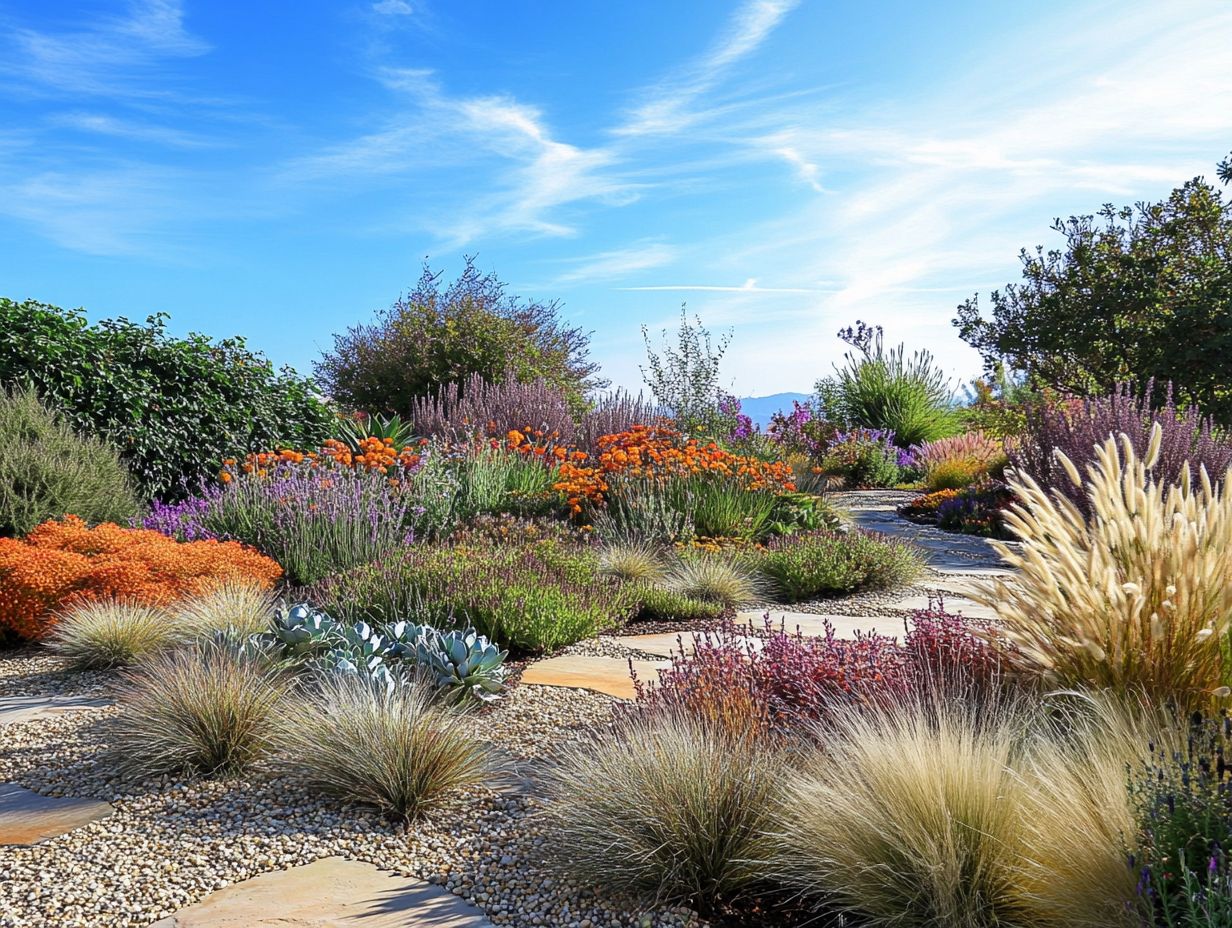
Implementing drought-resistant landscaping in your yard requires a meticulous, step-by-step approach. Begin by assessing your outdoor spaces to understand their unique characteristics.
Next, select plants that are well-suited to your environment. Ensure they thrive in low-water conditions while enhancing the overall beauty of your landscape.
Finally, carefully plan the layout to optimize both aesthetics and water efficiency. This paves the way for long-term success in your outdoor oasis. Start transforming your garden today!
Step-by-Step Guide
A step-by-step guide to drought-resistant landscaping starts with careful planning of your yard’s layout. Consider sun exposure, soil health, and the specific needs of your chosen plants to create an efficient and visually appealing space.
Begin with a thorough site analysis to pinpoint areas that bask in sunlight and those that retain moisture. Once you establish this foundation, selecting the right design features such as rock gardens, native plants, and landscaping methods that use little water becomes essential.
Incorporating drip irrigation systems can significantly enhance water efficiency during dry spells. After planting, don t overlook maintenance practices like mulching, which helps retain soil moisture and keep weeds at bay.
Regularly monitor plant health and adjust your care routines to ensure that your drought-resistant landscape thrives over time, offering both beauty and sustainability.
Maintaining Drought-Resistant Landscaping
Maintaining drought-resistant landscaping is crucial for longevity and effectiveness. Take charge of your landscape with a smart care strategy that incorporates eco-friendly landscaping for drought conditions and highlights sustainability and adaptability to shifting climate conditions.
Implementing these practices will help you cultivate a thriving garden that requires minimal resources, ensuring both beauty and resilience in your outdoor space.
Proper Care and Maintenance Tips
Proper care and maintenance tips for drought-resistant landscaping focus on techniques that promote sustainability and soil health while minimizing water use. This ensures your garden remains vibrant and resilient over time.
Incorporate specific practices like regular pruning. This not only helps maintain plant shape but also encourages healthy growth by removing dead or diseased branches.
Integrating soil amendments such as compost can significantly increase nutrient availability, enhancing soil structure and fostering beneficial microorganisms.
Don t overlook seasonal care routines, including mulching. This practice conserves moisture and inhibits weed growth, reducing competition for essential resources. By implementing these thoughtful maintenance practices, you ll enhance your landscape s resilience against drought conditions.
Frequently Asked Questions
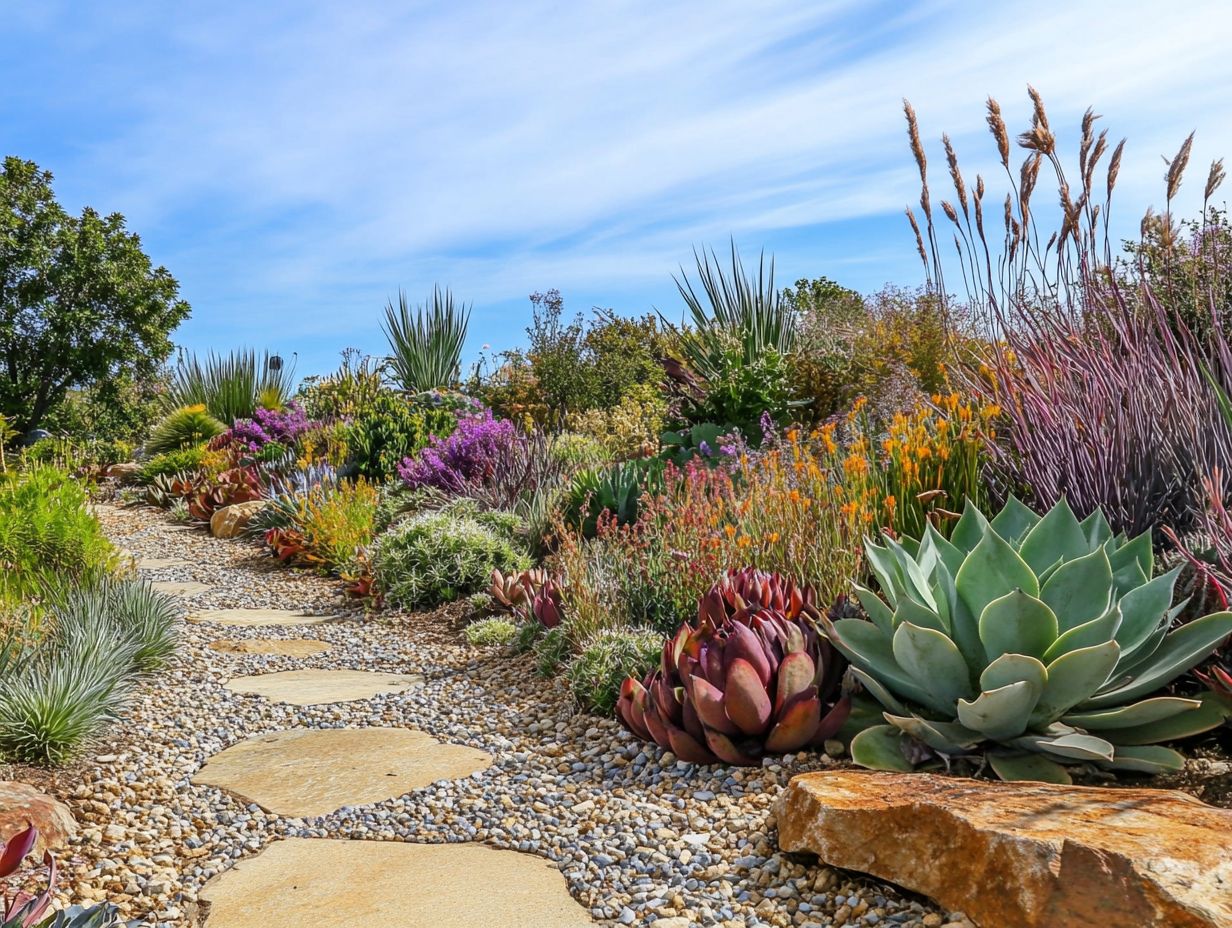
What are the top drought-resistant landscaping trends for 2024?
Some of the top trends for drought-resistant landscaping in 2024 include planting native and drought-resistant plants, incorporating hardscaping elements, and using smart irrigation systems.
Why is drought-resistant landscaping becoming more popular?
Drought-resistant landscaping is becoming more popular due to increasing awareness of water conservation and the need to adapt to changing climate conditions. Understanding the impact of drought on landscaping choices helps reduce water usage while maintaining a beautiful landscape even during periods of drought.
How can I incorporate hardscaping into my drought-resistant landscape?
Hardscaping elements such as gravel, rocks, and pavers add texture and interest to your landscape while also minimizing water usage. They can be used for pathways, seating areas, or decorative elements.
What are some popular native plants for drought-resistant landscaping in 2024?
Some popular native plants for drought-resistant landscaping in 2024 include succulents, cacti, lavender, salvia, and yarrow. These plants are adapted to the local climate and require minimal water once established, aligning with future trends in drought gardening.
Are there any new technologies for smart irrigation systems?
Yes, new technologies for smart irrigation systems are constantly being developed to improve water efficiency. These include weather sensors, soil moisture sensors, and drip irrigation systems that only water plants when needed.
How can I learn more about drought-resistant landscaping trends for 2024?
There are many resources available online, such as gardening websites and blogs, that provide information on current and upcoming trends for drought-resistant landscaping. You can also consult with a local landscaping professional for personalized recommendations.
Explore more about drought-resistant landscaping and start planning your own garden today!

